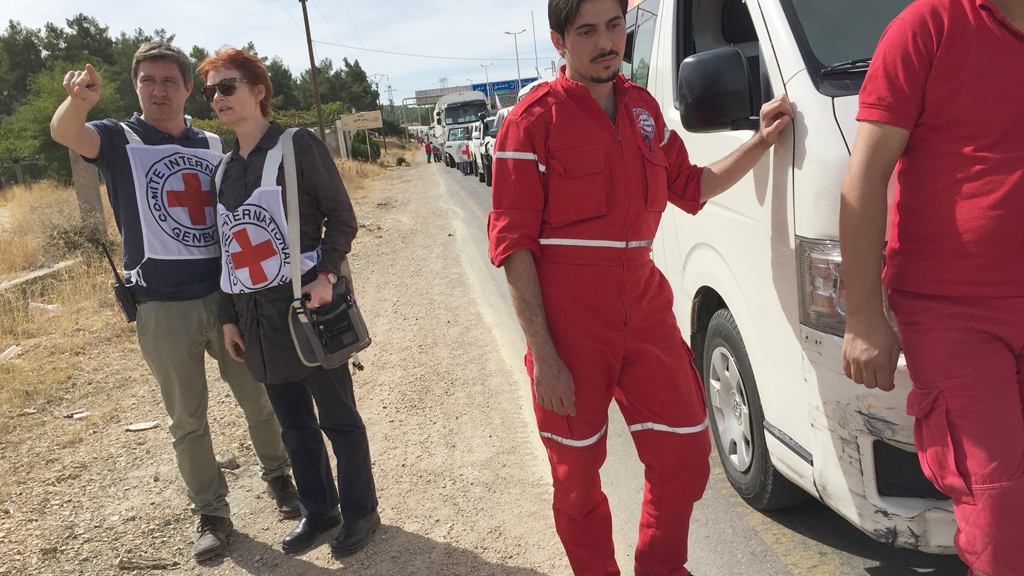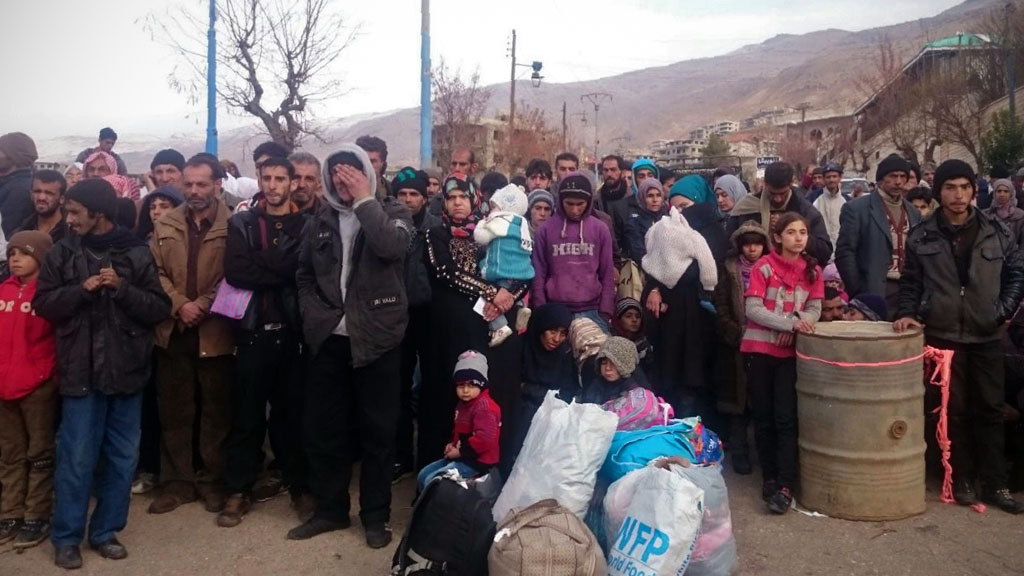Assad is starving his own people – with impunity

Starving civilians as a method of warfare is prohibited – as is clearly set out in the Geneva Convention. A contravention of this constitutes a war crime, even in internal state conflicts. In Syria however, this has been common practice. For years. And as time has gone by, on all sides of the war. This profoundly gruesome and inhuman tactic is being employed by the rebels and the Islamic State terror militia.
However, no side deploys the besieging of civilian areas, indiscriminate bombardment and starvation as a weapon in as systematic a fashion as the regime of Bashar al-Assad and its allied militia, such as the Iranian-backed Hezbollah. If they lose control of territory, they then try to unleash all the means at their disposal to make life hell for the people living in those areas.
On Monday, 44 trucks from the International Committee of the Red Cross reached the town of Madaya on the border with Lebanon, controlled by anti-government forces. The 42,000 people trapped here have not received any aid since last October. They have been forced to eat grass, leaves, dogs and donkeys.
It is difficult to verify if the terrible photographs of emaciated children being circulated on the Internet and Arab television are all genuinely from Madaya. The aid organisation Doctors Without Borders has however registered at least 28 cases in which people have died there of starvation or as a result of malnutrition since 1 December.
A war crime
It does not matter if the rebels, as the regime maintains, are storing food for their fighters. Nothing can justify the months-long blockade. There can be no justification, even if the radical rebels of the Islamist group Ahrar al-Sham, supported by Saudi Arabia, are doing the same in government-held Shia villages. The victims are always defenceless civilians, who have no choice about whose rule they live under. And the weakest are always the first to die: children, mothers, the sick, the elderly.

The UN says 400,000 Syrians are currently living under siege, 160,000 more than a year ago. Almost half of them are surrounded by government troops, almost 200,000 more by "Islamic State" in government areas close to the city of Deir al-Sour and another 20,000 by rebels. Nowhere is the failure of the international community more evident than in the fates of these people. Like the sieges of Yarmouk and Homs before, the situation in Madaya has triggered an international outcry.
Assad has no need to fear the UN Security Council
But this has not helped to enforce UN Security Council resolutions demanding unrestricted access for aid organisations. Russia and Iran are doing nothing to force the regime to comply with these. According to the UN, only one in every 10 of its requests to get aid to besieged areas is being granted. The Saudis are also not applying the pressure required to discipline the rebels.
Local ceasefires negotiated by the UN, often the only chance to help the afflicted population, are usually nothing more than rebel capitulations enforced by siege. The regime claims these, just as it did in Homs, as successes. And feels emboldened to offer those trapped in other places the choice: "Give up – or face destruction!"
Assad has no need to fear the UN Security Council. As the Red Cross convoys reached Madaya, he was tightening the noose around Muadhamija, a suburb of Damascus attacked with chemical weapons by the regime back in 2013. But the vague prospect of the International Criminal Court perhaps one day calling their tormenter to account is doing nothing to help the besieged at this present time.
Paul-Anton Kruger
© Suddeutsche Zeitung 2016
Translated from the German by Nina Coon
